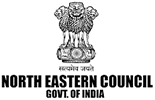Typhoid
Diseases

Typhoid
Symptoms: A Persistent High Temperature (Fever) that Gradually Increases Each Day, Associated with Headache, General Body Aches and Pain, Extreme Tiredness, Chills, Weakness, Stomach Pain, ‘Rose Spot’ or Rash Usually Seen on the Chest or Stomach, Diarrhea or Constipation, Cough, Loss of Appetite.
Medicines: Scientific Name: Ocimum tenuiflorum, Artemisia nilagirica (C.B.Clarke) Pamp, Erynglium fortidum, Eurya acuminata DC, Datura fastuosa, Artemisia nilagirica (C.B.Clarke) Pamp, Houttuynia Cordata, Local Name: Samakki, Soksuchi, Soksu a.ga, Tulsi, Moila sam, Samskal, Jengjil, Bol rasin, Heng bol seki, Pneumonia digke, Dikge gisim, Dikge Nojol gitchak, Samchatchi, Samritcheng, Dikge boba, Samkiljeng, Matchaduri.
Definition:
Typhoid fever also known as an ‘enteric fever’ is multisystemic illness caused by Salmonella typhi & Salmonella Para typhi-the main causative agent. Salmonella is transmitted by the fecal-oral route through contaminated water, food, under-cooked foods, fomites, poor hygiene and sanitation. It is one of the major causes of mortality and morbidity in overcrowded and unhygienic areas, however, the incidence and occurrence has decreased through public health care interventions, awareness and comprehensive research. The disease course ranges from early gastrointestinal distress to non-specific systematic illness but untimely interventions and later diagnosis can cause a threat/multiple complications. Typhoid fever is characterized by systematic illness along with abdominal pain and fever in a ‘step-ladder’ pattern.
Theme: Traditional Treatment- Conditions
Sub Theme: Typhoid



